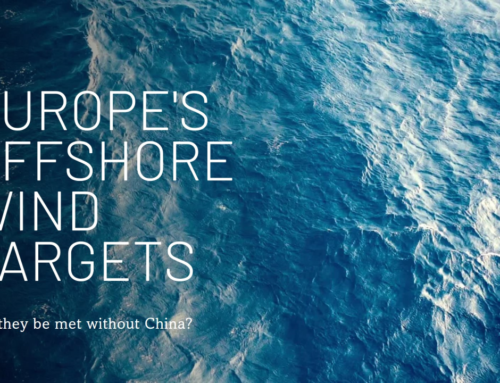Insights
Insights
Utsira Nord at a Crossroads: ESA Approval, Election Risks & Norway’s Offshore Wind Future
Update: March 2025
Dear Reader,
As this analysis was originally written in January 2025, I wanted to provide a brief update on developments since then. As of March 2025, the ESA approval process for Norway’s floating offshore wind development at Utsira Nord remains ongoing, with no updated timeline for the competition process. The government has recently conducted a public consultation focused on mechanisms to prevent overcompensation in cases where investment support is provided. This indicates continued progress on refining the state aid model, though the key regulatory hurdle of ESA approval is still pending resolution.
With the September 2025 election drawing closer, this continued regulatory delay further emphasizes the importance of securing timely approvals to maintain momentum for Norway’s floating offshore wind ambitions.
What follows is the original analysis from January 2025.
***
Where We Are Today: A Long Road with Many Turns
A Decade in the Making
For more than a decade, Utsira Nord has been at the heart of Norway’s floating offshore wind ambitions. As Norway’s first large-scale floating offshore wind zone, it represents a strategic step in positioning the country as a leader in floating wind technology. The government officially opened applications in March 2023, with three project areas expected to be allocated.
Despite the initial momentum, the process has faced repeated regulatory hurdles, delays, and uncertainty over critical next steps.
The 2025 National Budget and Increased State Support
A significant milestone came with Norway’s 2025 national budget, approved in December 2024, where the government pledged NOK 35 billion (€3.3 billion) in financial support for floating offshore wind development. This marks the largest single commitment to offshore wind in Norway’s history and demonstrates a long-term strategic intent.
However, while this financial commitment is a positive signal, it does not resolve the immediate regulatory bottlenecks facing Utsira Nord. The state aid model still requires ESA approval, delaying the formal launch of the competition process.
Why Is Utsira Nord Delayed? ESA State Aid and Regulatory Hurdles
The Ongoing ESA Approval Process
As of late january 2025, the ESA state aid approval process remains ongoing, and its resolution is critical for Utsira Nord to move forward.
Since Norway is part of the European Economic Area (EEA), any state aid must comply with EU rules and be approved by the EFTA Surveillance Authority (ESA). The complexity of Norway’s proposed state aid model has been a key reason for the delay.
Challenges with ESA Approval
The two-step model for Utsira Nord—where project areas are first allocated based on qualitative criteria before developers compete for state aid—has added a layer of complexity to the ESA review.
Additionally, Norway’s state aid scheme must comply with the Climate, Energy, and Environmental Aid Guidelines (CEEAG), which set stringent conditions to ensure that state aid:
- Is necessary and proportionate to the project’s funding gap.
- Does not unduly distort competition in the European offshore wind market.
- Is granted in a transparent and competitive manner.
Unlike Sørlige Nordsjø II (SN II), which was approved under a faster, crisis-driven framework (TCTF), Utsira Nord’s model falls under CEEAG, making the approval process more rigorous.
Until ESA approval is secured, the competition process cannot proceed, further delaying investment decisions and industrial planning.
Utsira Nord and the 2025 Norwegian Election: Risks and Solutions
ESA State Aid Approval – The Immediate Next Step
The ESA decision is the single most important bottleneck. Approval is expected within the first half of 2025, after which the government can formally launch the competition process for the three Utsira Nord project areas.
Timeline for the Competition – Political Considerations
Once ESA gives the green light, the government will announce a formal bid submission deadline for interested developers.
Originally, the bid preparation period was set at five months in the March 2023 tender, and we could see a similar timeline in the new process. This is meant to allow new players and bidders ample time to enter the competition while ensuring that the process moves forward without excessive delays.
Given this, a bid deadline in mid-to-late 2025 is the most likely scenario. However, this raises concerns about potential election-related delays.
The Election Factor – A Possible Solution
The Norwegian parliamentary elections in September 2025 could be a major turning point. If there is a change in government, policies could shift, and a new administration might reconsider the offshore wind strategy.
A Possible Solution: Bid Submission Before the Election A realistic yet structured approach is needed to minimize risk:
- Secure ESA approval early in 2025 to avoid unnecessary delays.
- Maintain a firm yet fair bid deadline (3-6 months) that balances preparation time with urgency.
- Encourage bipartisan support to ensure a stable policy environment regardless of election results.
Updated Timeline for Utsira Nord
The original target for first power generation was 2030, but given the delays in regulatory approvals and bidding, it is now expected to be pushed back by at least two years.
While this is not ideal, the real focus should be on securing a stable, executable timeline rather than rushing decisions that could lead to further complications.
The Future of Norway’s Floating Offshore Wind: Next Steps for Utsira Nord
Utsira Nord represents one of Norway’s best opportunities to lead in floating offshore wind, but momentum is critical. With the ESA decision pending, an election on the horizon, and global competition increasing, we must ensure that delays today do not turn into lost opportunities tomorrow.
That said, there’s reason for confidence. The political will is there, and the financial commitment is real—but the next steps must be executed with precision. A structured, well-timed competition process, aligned with clear regulatory conditions, will allow Norway to deliver on its ambitions while attracting the right industry partners.
There is still a window of opportunity, but windows don’t stay open forever. The right choices now will shape Norway’s offshore wind trajectory—not just for the next year, but for the next decade.




Leave A Comment